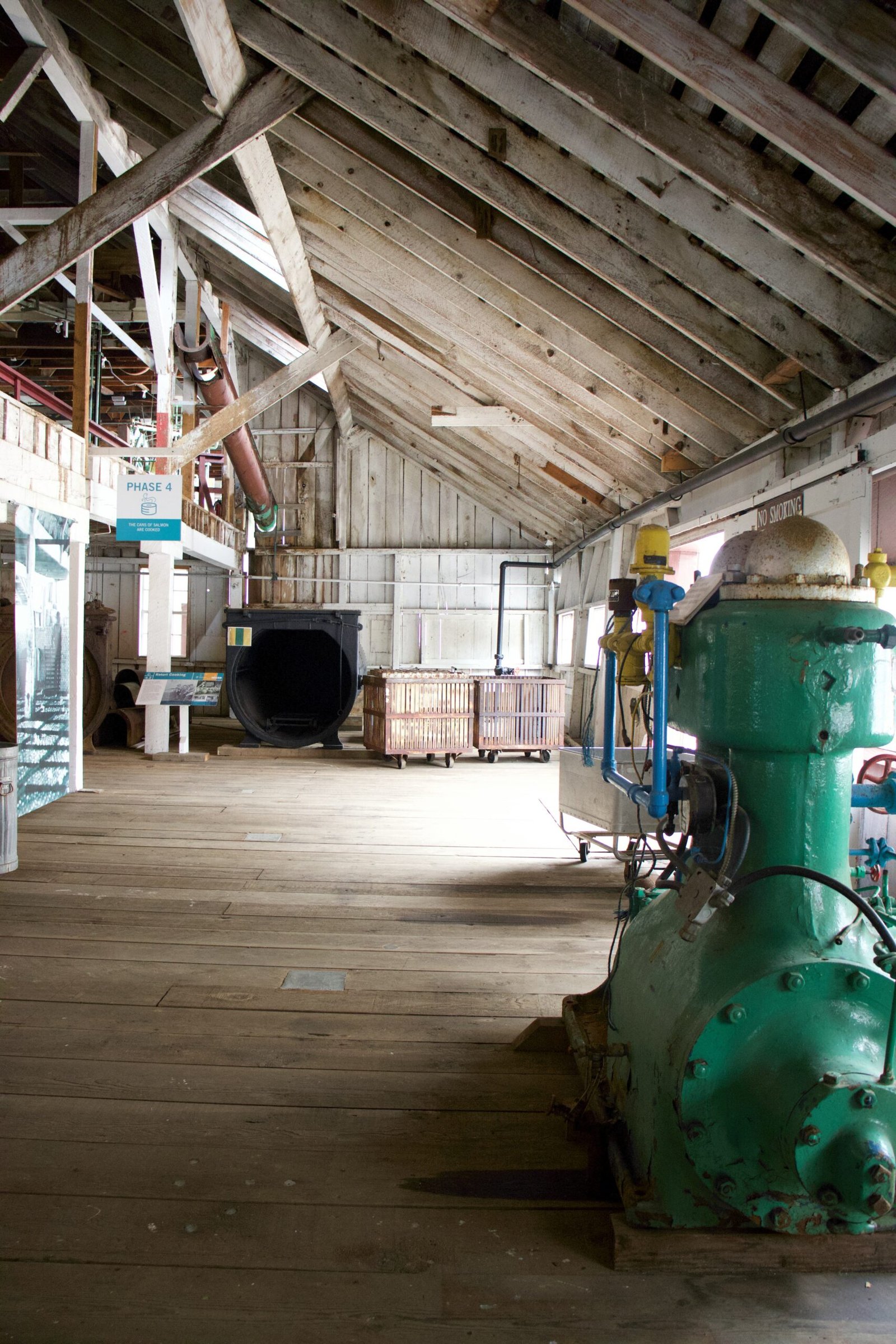Introduction to Industrial Machinery Exports
Industrial machinery exports represent a crucial segment of global trade, encompassing a wide range of equipment used in various sectors, including manufacturing, construction, and agriculture.
These exports not only facilitate the growth of industries but also stimulate economic development by fostering technological advancements and job creation in exporting countries.
As countries increasingly seek to modernize their infrastructure and enhance production capabilities, the demand for machinery exports continues to rise, reflecting the industry’s vital role in the global economy.
In 2023, the landscape of the industrial machinery sector demonstrated resilience amidst challenging global market conditions.
Many countries adapted to geopolitical tensions, fluctuating commodity prices, and evolving consumer preferences, leading to a dynamic marketplace.
The integration of advanced technologies, such as automation and artificial intelligence, has further transformed manufacturing and other industrial processes, resulting in changes to production methodologies and product offerings.
As a result, the machinery exports sector is markedly influenced by these innovations, making adaptability essential for suppliers looking to maintain competitiveness.
Looking forward to 2024, several trends are anticipated to shape the industrial machinery export market.
Notably, an increased emphasis on sustainability is expected, prompting manufacturers to invest in greener technologies and practices.
The demand for eco-friendly machinery is anticipated to surge as more countries commit to reducing their carbon footprints.
Additionally, the digital transformation of industries will likely drive the need for sophisticated machinery with advanced connectivity and automation capabilities.
These developments will not only create opportunities for exporting nations but also necessitate a responsive and proactive approach to meet the evolving needs of global markets.
Impact of Automation on Export Trends
The advent of automation technologies, particularly robotics and artificial intelligence (AI), is transforming production processes in industrial sectors worldwide.
This technological revolution has significant implications for machinery exports, influencing not only the way products are manufactured but also how they are traded across borders.
As more manufacturers integrate automation into their operations, the demand for advanced industrial machinery rises, which in turn enhances export activities in this sector.
Automation technologies streamline production lines and increase efficiency, enabling manufacturers to produce goods at a lower cost and with greater precision.
According to recent studies, the adoption rate of robotics in manufacturing has surged, particularly in industries such as automotive, electronics, and consumer products.
As companies embrace these technologies, they often seek to upgrade their machinery inventory to include the latest automated solutions.
This trend fosters a burgeoning market for machinery exports, as manufacturers look to source state-of-the-art equipment from suppliers around the globe.
The influence of AI in production is equally significant. AI-powered systems can analyze vast amounts of data, optimize workflows, and predict maintenance needs, thereby preventing downtime and increasing productivity.
Such capabilities not only enhance the functionality of existing machinery but also create a demand for new machinery designed to integrate seamlessly with AI systems.
Consequently, machinery exporters are positioned to cater to this growing need, providing manufacturers with the tools required to maintain a competitive edge in a rapidly evolving market.
Moreover, as countries adopt more sophisticated automation technologies, the landscape of global trade is shifting.
Nations with advanced manufacturing capabilities are likely to experience an uptick in machinery exports due to their ability to create high-quality products at competitive prices.
The ripple effect of these technological advancements ultimately redefines export trends, reflecting the intricate relationship between automation and global trade dynamics.
Advancements in Manufacturing Technologies
The landscape of machinery exports is undergoing significant transformation due to rapid advancements in manufacturing technologies.
A key innovation driving this change is 3D printing, which allows manufacturers to produce complex components with high precision and reduced waste.
This additive manufacturing technique not only shortens production cycles but also facilitates customization, enabling companies to respond quickly to market demands.
As a result, this enhances the competitiveness of firms engaged in industrial machinery exports, allowing them to capture a larger share of the global market.
In addition to 3D printing, the concept of smart factories has emerged prominently.
These are highly automated and interconnected production environments that utilize the Internet of Things (IoT), artificial intelligence, and big data analytics.
By integrating these technologies, manufacturers can monitor their processes in real-time, optimizing operational efficiency and minimizing downtime.
Such advancements afford machinery exporters a substantial advantage, as smart factories can significantly reduce production costs and improve product quality, further solidifying their position in a competitive landscape.
Despite the numerous benefits, the adoption of these advanced manufacturing technologies does not come without challenges.
Companies may face significant upfront investments in new equipment and systems, which can strain financial resources, particularly for smaller firms.
Additionally, the rapid pace of technological advancements poses a risk of obsolescence, where businesses feel pressured to continually upgrade their machinery and systems to remain competitive in the global market.
Moreover, a skilled workforce is essential to operate these sophisticated technologies, thus requiring investments in training and development to ensure employees can effectively adapt to new processes.
As industrial machinery exports continue to evolve, embracing these manufacturing technologies will be vital for companies seeking to improve efficiency and maintain their competitive edge.
This technological integration promises to define the future of machinery exports, while simultaneously presenting new operational challenges that businesses must navigate.
Global Market Trends and Economic Factors
The international landscape for machinery exports is continually evolving, influenced by a myriad of factors that shape global demand and economic stability in key markets.
As we look toward 2024, it is essential to consider the broader economic indicators and trade dynamics that will impact exporters in the industrial machinery sector.
One significant trend is the increasing demand for advanced manufacturing technologies, particularly in emerging markets.
Countries such as India, Brazil, and Vietnam are making substantial investments in industrial automation and sophisticated machinery to enhance productivity and economic growth.
This shift in demand provides a lucrative opportunity for exporters of industrial equipment, particularly for those offering innovative solutions that align with these markets’ developmental goals.
Additionally, trade policies and tariffs remain critical factors influencing machinery exports. Recent trade agreements and strategic partnerships can either facilitate or hinder the flow of industrial equipment across borders.
For instance, favorable trade agreements can lower tariffs, thereby enhancing competitive pricing for exporters.
Conversely, protectionist measures in some regions can restrict access to vital markets, necessitating exporters to navigate complex regulatory environments.
Economic stability is another essential element. Countries experiencing robust economic growth are more likely to invest in machinery, leading to increased demand for exports.
Conversely, geopolitical tensions and economic downturns can lead to uncertainty, affecting investment budgets and demand projections for machinery.
Exporters must remain vigilant to these fluctuations and adapt their strategies accordingly.
In conclusion, understanding the interplay of global demand shifts, trade policies, and economic stability is crucial for exporters of industrial machinery as they prepare for the opportunities and challenges that 2024 may present.
Staying informed and responsive to these trends will enhance their competitive edge and sustainability in the ever-changing global market.
Sustainability and Green Manufacturing Trends
The increasing awareness of environmental issues has led to a significant shift in the industrial machinery sector towards sustainability and green manufacturing practices.
As companies and consumers alike prioritize eco-friendly solutions, machinery exports are being influenced by these evolving preferences.
Manufacturers are now focused on producing equipment that not only meets operational requirements but also minimizes environmental impact.
This shift encompasses the entire lifecycle of the machinery, from production techniques to end-of-life disposal.
In response to growing demand, many machinery manufacturers are investing in research and development to create innovative products that align with green principles.
This includes the design and fabrication of energy-efficient machines, which reduce energy consumption and overall carbon footprints.
Furthermore, the utilization of sustainable materials in construction enhances the recyclability of machinery, making them more appealing to environmentally-conscious buyers.
These efforts not only help companies comply with stringent environmental regulations but also serve as a competitive advantage in international markets.
The trend towards sustainability is reflected in the changing dynamics of export strategies.
As nations implement stricter environmental standards, exporters must adapt to these regulations to tap into new markets.
Buyers are increasingly seeking suppliers who can provide evidence of sustainable practices, such as certifications and compliance with eco-labeling requirements.
Consequently, exporters who prioritize eco-friendly machinery and practices are more likely to establish a solid foothold in diverse global markets where sustainability is a primary concern.

In conclusion, the emphasis on sustainability and green manufacturing trends is redefining the landscape of machinery exports.
By aligning with these practices, manufacturers not only enhance their marketability but also contribute positively to global environmental efforts.
Regional Insights: Key Markets for Export Growth
The global landscape for machinery exports is notably dynamic, with various regions demonstrating significant potential for growth in 2024.
In particular, emerging markets in Asia-Pacific, Latin America, and Africa are becoming increasingly attractive for exporters of industrial machinery.
Within these regions, specific countries such as India, Brazil, and Nigeria are showing promise due to various demographic and economic factors.
India, with its burgeoning manufacturing sector, is a standout in the Asia-Pacific region.
The government’s Make in India initiative has spurred investments in manufacturing and infrastructure, paving the way for increased demand for advanced machinery.
The growing urban population, coupled with rising disposable incomes, indicates a robust market for high-quality industrial equipment.
Moreover, India’s strategic location can serve as a gateway to other South Asian markets, enhancing its appeal for machinery exporters.
In Latin America, Brazil remains a key player, benefiting from its large domestic market and diverse industrial base. The country is prioritizing infrastructural development, thus creating avenues for foreign machinery companies.
With a focus on modernization and efficiency across various sectors, machinery exports are likely to flourish.
Additionally, Brazil’s membership in trade blocs such as MERCOSUR further facilitates access to neighboring markets, making it advantageous for exporters.
Meanwhile, in Africa, Nigeria is emerging as a pivotal market for industrial machinery exports. As the country aims to diversify its economy and reduce dependence on oil, there is a heightened demand for manufacturing and production capabilities.
The increasing investment in sectors such as agriculture, construction, and telecommunications is driving the need for innovative machinery solutions.
Overall, these regions demonstrate considerable growth potential fueled by demographic shifts and targeted government initiatives.
For exporters looking to penetrate these markets, understanding local challenges and aligning with strategic opportunities is essential for success in the machinery exports arena.
Technological Innovations Driving Exports
As the global market for machinery exports continues to evolve, technological innovations are becoming increasingly pivotal.
In 2024, several key advancements in technology are expected to significantly influence the export landscape, enhancing competitiveness and efficiency.
One of the foremost innovations driving this trend is the integration of the Internet of Things (IoT) into industrial machinery.
IoT-enabled machines allow for real-time data collection and analysis, leading to improved operational efficiency and reduced downtime.
This advancement provides manufacturers with the insights needed to make informed decisions, thereby increasing productivity and, consequently, the attractiveness of machinery exports.
Another critical advancement shaping the future of machinery exports is the incorporation of machine learning into production processes.
Machine learning systems enhance machinery by enabling predictive maintenance, which forecasts machinery issues before they escalate into significant problems.
This reduces maintenance costs and ensures that production lines remain operational, a vital consideration for manufacturers seeking to optimize their exports.
By leveraging machine learning, businesses can enhance the reliability of their industrial equipment, thereby increasing demand in international markets.
Augmented reality (AR) also plays a transformative role in facilitating machinery exports.
AR technology enhances user training by providing immersive experiences that help operators better understand machine functionalities and maintenance procedures.
This leads to lower operational risks and higher efficiency, making these machines more appealing to potential buyers in the export market.
Additionally, AR assists in remote troubleshooting, allowing manufacturers to offer better support services, further enhancing the value proposition for international clients.
In summary, the integration of IoT, machine learning, and augmented reality not only enhances the functionality and efficiency of industrial machinery but also presents significant export opportunities.
As these technological innovations continue to advance, they are set to drive the growth of machinery exports in 2024 and beyond.
Challenges Facing Exporters in 2024
As the machinery exports landscape evolves, exporters are expected to encounter various challenges in 2024 that could impact their operations and profitability.
One of the primary issues is supply chain disruptions, which have been exacerbated by geopolitical tensions and global economic shifts.
Exporters may face delays in securing raw materials or components, ultimately affecting their ability to meet delivery timelines.
The unpredictability of logistics and transportation routes further complicates the export process, making it essential for companies to develop robust contingency plans.
In addition, exporters must navigate a complex web of regulatory hurdles that vary by country.
Compliance with international trade laws, tariffs, and environmental regulations requires careful attention to detail.
Exporters must be aware of the potential for changes in governmental policies that could affect tariffs on machinery exports, as well as the implications of heightened inspections aimed at ensuring compliance with stringent safety and quality standards.
To mitigate these risks, firms ought to invest in legal expertise and engage actively with trade associations that can provide timely updates and support for navigating regulatory challenges.
Another significant hurdle confronting machinery exporters is the intensifying competition from emerging markets.
Countries with rapidly expanding industrial sectors often present lower production costs and more favorable trade terms, enticing global buyers.
Thus, existing exporters should consider enhancing their product offerings and emphasizing quality, reliability, and after-sales service to differentiate themselves in a crowded marketplace.
Additionally, leveraging technology for better operational efficiency can enhance competitiveness, allowing exporters to manage costs effectively and improve responsiveness to market demands.
To equip themselves against these challenges, exporters must adopt a proactive approach, focusing on strategic partnerships, diversifying their supply chains, and incorporating innovative technologies to remain resilient in the face of uncertainties in 2024.
Conclusion: The Future of Industrial Machinery Exports
As we look ahead to 2024 and beyond, the landscape of machinery exports is poised for significant transformations.
The key trends discussed throughout this blog highlight the increasing role of technology, sustainability initiatives, and global market dynamics in shaping the future of industrial machinery trade.
Exporters must remain alert to these shifts, ensuring they align their strategies to capture emerging opportunities and mitigate potential risks.
One of the most notable trends is the growing emphasis on digitalization and automation within the machinery sector.
As manufacturing processes become increasingly reliant on advanced technologies, exporters who adapt to adopting smart machinery and Industry 4.0 principles will likely seize a competitive advantage.
This technological transition not only improves operational flexibility but also enhances the quality and efficiency of the equipment, making it more attractive in a global market that favors innovation.
Moreover, sustainability continues to be a critical focal point for machinery exports.
The global push for greener practices and regulatory compliance creates both challenges and opportunities for suppliers.
Exporters should prioritize the development of energy-efficient machinery and comply with international environmental standards to meet the demand from conscientious consumers.
This trend reflects a broader shift in industries worldwide, where sustainable practices are becoming non-negotiable factors in purchasing decisions.
In addition to technological and environmental considerations, exporters must also navigate geopolitical influences and economic fluctuations.
Building resilient supply chains and maintaining flexibility in production capabilities will be paramount for adapting to these changes.
By actively engaging with trade policies and understanding international market trends, exporters can better position themselves for future success.
In conclusion, the future of machinery exports will be a reflection of adaptability and innovation.
By focusing on technology, sustainability, and market intelligence, exporters can ensure their business remains relevant and competitive in an ever-evolving market landscape.






No comment yet, add your voice below!